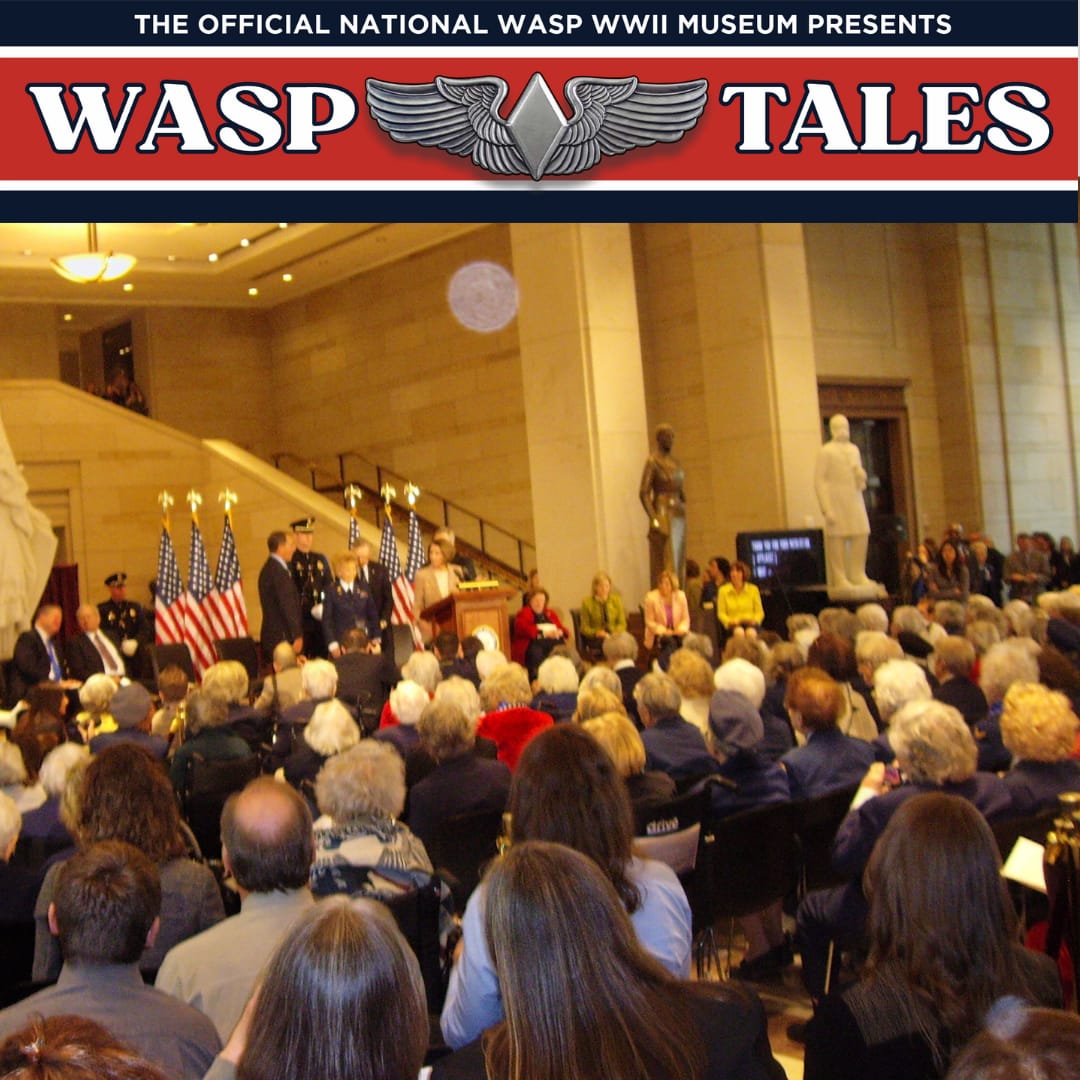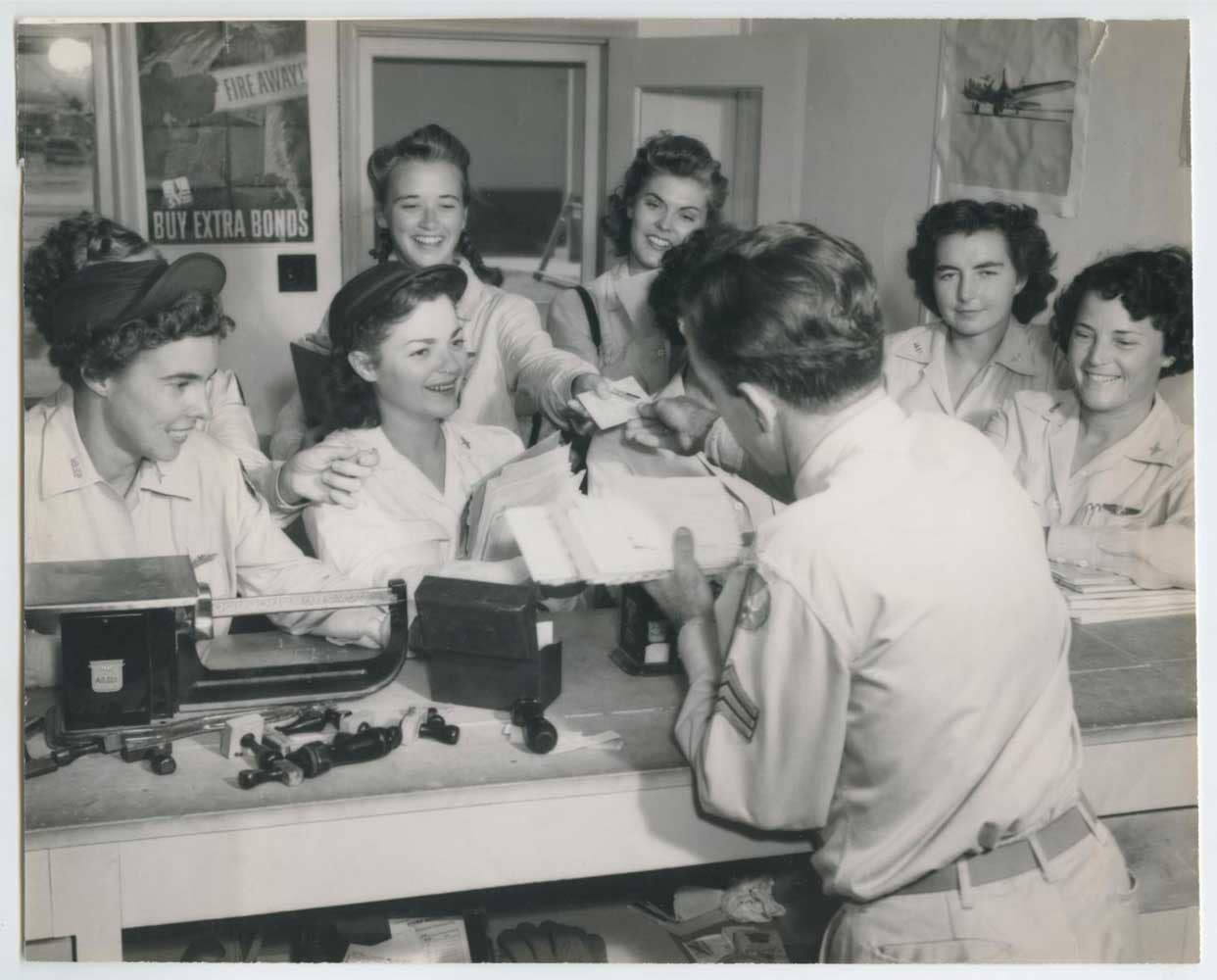On an extraordinary day in March of 2010, I stood before the steps of the U.S. Capitol, admiring the majestic beauty of its immediately familiar white dome rising over 285 feet above the Capitol building’s rotunda. Perhaps the nation’s most recognizable and identifiable American landmark, the prominent dome that overlooks the city of Washington, commands a westward view across the Capitol Reflecting Pool to the Washington Monument and the Lincoln Memorial just two miles away.

Photo by: Julia Lauria-Blum
The Capitol with its impressive dome stands as an icon to the American people, built high on a hill as a symbol of a democracy, visible from nearly every spot of the city. Its inspiring form soars and rises above the horizon; the limitless sky is its backdrop.
What brought me to that extraordinary day was the (until then) not so visible, yet soaring and inspirational legacy of the Women Airforce Service Pilots of WWII, who on that day received the Congressional Gold Medal (CGM) nearly seven decades after their service to our country during World War II. I was there to accept the CGM on behalf of WASP, Lt. Col. Marjorie M. Gray, who had passed away in 2008.
The CGM is the oldest and highest civilian award in the United States bestowed by the United States Congress, and it is the highest expression of national appreciation awarded to individuals, or groups who have made a major impact on American history and culture.
The WASP were the first women in history to fly American military aircraft during the Second World War. Following the attack on Pearl Harbor on December 7, 1941, the United States entered a war on two fronts in Europe and the Pacific Theater of Operations. In this time of national emergency, civilian women pilots volunteered and were recruited as a detachment of the U.S. Army Air Forces (USAAF) to learn how to fly military aircraft ‘the Army way’ so that they could fill vital flying roles on the U.S. Homefront, thus releasing male pilots who were desperately needed for overseas combat duty.
Between 1942 and 1944, a total of 1,102 recruits from the Women’s Auxiliary Ferrying Squadron (WAFS) and the Women’s Flight Training Detachment (WFTD) served as WASP. They were stationed at 120 Army air bases across the U.S.A. They flew fighters, bombers, transport and training aircraft in every type of military aircraft in the USAAF’s arsenal, and in every capacity, except combat. Their assignments included ferrying, test and instructor piloting, towing targets for air-to-air and ground-to-air practice, transporting personnel and cargo, simulated strafing, smoke laying, night tracking, flying drones, and more.
Over the course of the program’s existence, the WASP flew over 60,000,000 million miles. Thirty-eight women lost their lives as trainees and on operational duty. As civilians, with the promise to militarize them at a later date, the 38 women who died while serving their country were not eligible for military benefits, their burials were at the expense of their families or classmates, and no gold stars were allowed in the windows of their family home, nor an American flag to drape over their coffins.
In 1944, the promised bill to militarize the WASP failed in Congress by 19 votes, and in December of that year, they were unceremoniously disbanded and sent home at their own expense. Their military records were sealed and stamped as classified and filed away in government archives, unavailable to historians and scholars who wrote the history of WWII.

Photo by: Julia Lauria-Blum
In 1977, 33 years after disbandment and after a hard-fought, concerted effort, Congress finally voted to give the WASP the veteran status that they so richly deserved. The WASP maintained a close-knit community, forged by their common experiences of serving their country during war. As part of their desire to educate the American public about their untold history, WASP assisted ‘Wings Across America’, an organization dedicated to educating the public about the remarkable accomplishment of these WWII veterans.

Photo by: Julia Lauria-Blum
In 2009 a Bill to Award a Congressional Gold Medal to the Women Airforce Service Pilots (WASP) was passed in both chambers of Congress and signed into law S.614 by President Barack Obama on July 1, 2009. On March 10, 2010, all surviving WASP. and the family of those deceased were honored at the IIIth Congress Congressional Gold Medal Ceremony in Honor of the Women Airforce Service Pilots at the United States Capitol, and each was them were presented the Medal.
The story of how I had arrived to that day before the steps of the U.S. Capitol to accept the late Lt. Col. Marjorie Gray’s CGM posthumously is a multi-layered narrative, but it had much to do with the resources and connections that I had made in the years prior to that extraordinary day, most notably Nancy Parrish’s WASP on the Web (http://www.wingsacrossamerica.us/); Andy Hailey’s https://www.wwii-women-pilots.org/, the late Dawn Letson, former Executive Director of the Woman’s Collection at TWU, the late Florence Shutsy Reynolds, and many others who had a common interest in the spreading the word about the WASP.
Suffice it to say, it was an incredible honor to take part in helping to make this extraordinary day in March a reality… and this one is for the WASP of WWII and their soaring and most inspirational legacy. Fair skies and happy landings.

Written by: Julia Lauria-Blum
Photos courtesy of: Julia Lauria-Blum
About Julia Lauria-Blum:
Julia Lauria-Blum earned a degree in the Visual Arts at SUNY New Paltz. An early interest in women aviation pioneers led her to research the Women Airforce Service Pilots of WWII. In 2001 she curated the permanent WASP exhibit at the American Airpower Museum (AAM) in Farmingdale, NY, and later curated ‘Women Who Brought the War Home, Women War Correspondents, WWII’ at the AAM. She is the former curatorial assistant & collections registrar at the Cradle of Aviation Museum on Long Island and is currently editor-in-chief for Metropolitan Airport News.
Julia is the proud mother of two daughters and a rescued Boxer. Her many interests include swimming, painting, traveling, aviation history, cooking, and storytelling.


